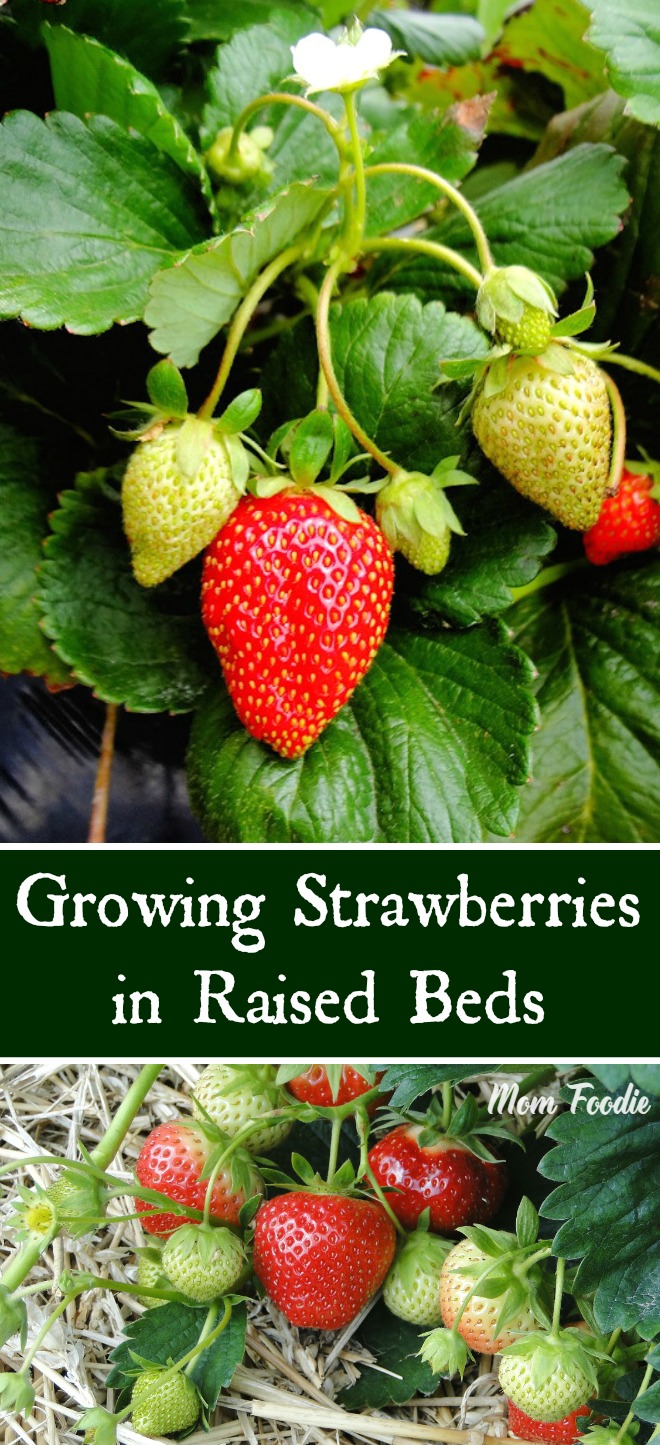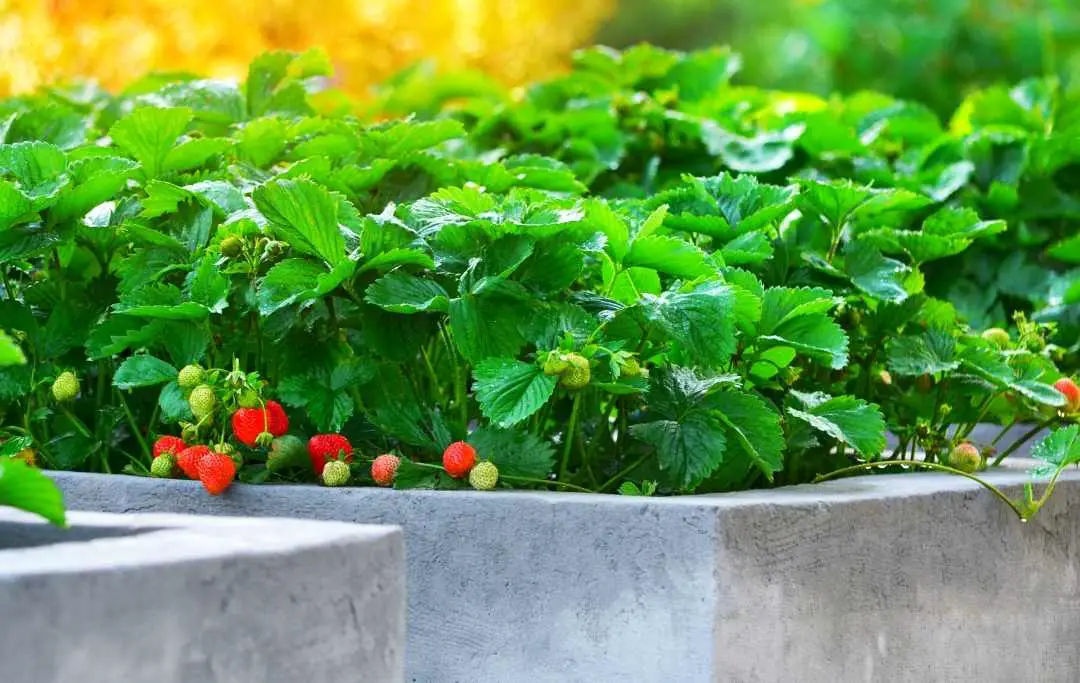Why Raised Beds are Ideal for Strawberry Cultivation
Raised beds offer a multitude of benefits for growing strawberries, making them an ideal choice for gardeners seeking to cultivate these delicious fruits. One of the primary advantages of raised beds is improved drainage, which is essential for strawberry plants that are susceptible to root rot and other diseases caused by waterlogged soil. By elevating the soil, raised beds allow excess water to drain away from the roots, reducing the risk of disease and promoting healthy growth.
In addition to improved drainage, raised beds also provide warmer soil temperatures, which strawberries need to thrive. Strawberry plants typically require soil temperatures between 60°F and 70°F (15°C and 21°C) to produce well, and raised beds can warm up faster than in-ground soil, giving strawberries a head start on the growing season. Furthermore, raised beds can be filled with a mix of high-quality soil and compost, providing strawberries with the necessary nutrients for optimal growth.
Raised beds also offer better soil structure and aeration, which are critical for strawberry plants that have a shallow root system. By using a well-draining potting mix and adding organic matter like compost, gardeners can create a soil environment that is conducive to healthy root growth and development. This, in turn, promotes strong and vigorous plants that are better equipped to produce abundant fruit.
Another significant advantage of raised beds for growing strawberries is the reduced risk of soil-borne diseases. By using a fresh potting mix and avoiding the use of contaminated soil, gardeners can minimize the risk of diseases like verticillium wilt and fusarium wilt, which can devastate strawberry crops. Additionally, raised beds make it easier to implement crop rotation and other disease management strategies, further reducing the risk of disease.
Overall, raised beds provide a unique combination of benefits that make them an ideal choice for growing strawberries. By offering improved drainage, warmer soil temperatures, better soil structure, and reduced disease risk, raised beds give strawberry plants the best possible start in life, setting them up for success and maximizing yields.
Choosing the Right Strawberry Variety for Your Raised Bed
With numerous strawberry varieties available, selecting the right one for your raised bed can be a daunting task. However, by understanding the different types of strawberry varieties and their characteristics, you can make an informed decision that suits your climate and desired harvest period. There are three main types of strawberry varieties: June-bearing, ever-bearing, and day-neutral.
June-bearing strawberry varieties produce one large crop in the spring, typically in June, and are ideal for gardeners who want a large harvest all at once. These varieties are often more productive than ever-bearing and day-neutral varieties, but they require more maintenance and may need to be replaced every few years. Some popular June-bearing varieties include ‘Earliglow’, ‘Allstar’, and ‘Camarosa’.
Ever-bearing strawberry varieties produce multiple smaller crops throughout the growing season, typically from spring to fall. These varieties are ideal for gardeners who want a continuous harvest and are willing to provide more frequent maintenance. Ever-bearing varieties are often more disease-resistant than June-bearing varieties and can produce fruit for several years. Some popular ever-bearing varieties include ‘Everbearing Supreme’, ‘Tribute’, and ‘Seascape’.
Day-neutral strawberry varieties produce flowers and fruit continuously, regardless of the length of daylight. These varieties are ideal for gardeners who want a continuous harvest and live in areas with mild winters. Day-neutral varieties are often more productive than ever-bearing varieties and can produce fruit year-round in warmer climates. Some popular day-neutral varieties include ‘Albion’, ‘Camarosa’, and ‘Ventana’.
When selecting a strawberry variety for your raised bed, consider factors such as climate, soil type, and desired harvest period. If you live in an area with cold winters, a June-bearing or ever-bearing variety may be a better choice. If you live in a warmer climate, a day-neutral variety may be more suitable. Additionally, consider the specific growing conditions of your raised bed, such as sunlight and soil quality, when selecting a variety.
Ultimately, the right strawberry variety for your raised bed will depend on your specific needs and preferences. By understanding the different types of strawberry varieties and their characteristics, you can make an informed decision that will help you achieve success in growing strawberries in raised beds.
Preparing Your Raised Bed for Strawberry Planting
Before planting strawberries in your raised bed, it’s essential to prepare the soil to ensure optimal growth and production. The first step is to test the pH level of your soil, as strawberries prefer a slightly acidic to neutral soil pH between 5.5 and 6.5. You can purchase a soil testing kit or send a sample to a laboratory for analysis.
Based on the test results, you may need to amend your soil to adjust the pH level. If your soil is too acidic, you can add lime to raise the pH, while sulfur can be added to lower the pH if it’s too alkaline. Additionally, strawberries require a well-draining soil with a mix of organic matter, such as compost or well-rotted manure, to provide nutrients and improve soil structure.
To prepare your raised bed, start by removing any debris, weeds, or existing plants. Then, add a 2- to 3-inch layer of compost or well-rotted manure to the soil surface. Mix the organic matter into the top 6 to 8 inches of soil using a garden fork or spade. This will help to improve soil structure, increase the water-holding capacity, and provide essential nutrients for your strawberry plants.
Next, rake the soil to create a smooth, even surface. This will help to prevent any air pockets or uneven settling of the soil, which can affect the growth of your strawberry plants. Finally, apply a 2- to 3-inch layer of organic mulch, such as straw or wood chips, to the soil surface. This will help to retain moisture, suppress weeds, and regulate soil temperature.
By following these steps, you can create a well-prepared raised bed that will provide your strawberry plants with the optimal growing conditions they need to thrive. Remember to plant your strawberries in the early spring or late summer/early fall, when the weather is cooler, to ensure the best possible start.
When growing strawberries in raised beds, it’s also essential to consider the spacing and layout of your plants. Strawberry plants typically require 12 to 18 inches of space between each plant, and 3 to 4 feet between each row. This will allow for good air circulation, easy access for maintenance, and optimal growth.
How to Plant Strawberries in Raised Beds for Maximum Yield
Planting strawberries in raised beds requires careful attention to detail to ensure maximum yield and optimal growth. Here’s a step-by-step guide on how to plant strawberries in raised beds:
Step 1: Prepare the Planting Site
Before planting, make sure the raised bed is free of debris and weeds. If necessary, add a 2- to 3-inch layer of compost or well-rotted manure to the soil surface and mix it in well.
Step 2: Choose Healthy Plants
Select healthy strawberry plants with bright green leaves and no signs of disease or pests. If you’re buying plants from a nursery, choose ones that are specifically labeled as “raised bed” or “container” varieties.
Step 3: Plant at the Right Depth
Plant the strawberry plants at the same depth as they were in the pot, making sure the crown (where the roots and leaves meet) is level with the soil surface. Space the plants 12 to 18 inches apart, depending on the variety.
Step 4: Water Thoroughly
Water the plants thoroughly after planting, and keep the soil consistently moist during the first few weeks after planting. This will help the plants establish a strong root system.
Step 5: Mulch Around the Plants
Apply a 2- to 3-inch layer of organic mulch, such as straw or wood chips, around the plants to retain moisture, suppress weeds, and regulate soil temperature.
Step 6: Provide Support
Some strawberry varieties, such as June-bearing and ever-bearing, may require support as they grow. Use strawberry clips or straw to support the plants and keep them upright.
By following these steps, you can ensure that your strawberry plants get off to a strong start and produce a bountiful harvest. Remember to keep the soil consistently moist, fertilize regularly, and provide support as needed to maximize yield.
When growing strawberries in raised beds, it’s also essential to consider the spacing and layout of your plants. Strawberry plants typically require 12 to 18 inches of space between each plant, and 3 to 4 feet between each row. This will allow for good air circulation, easy access for maintenance, and optimal growth.
Essential Care Tips for Growing Strawberries in Raised Beds
Once your strawberry plants are established in your raised bed, it’s essential to provide them with the right care to ensure optimal growth and production. Here are some essential care tips to keep in mind:
Fertilization: Strawberries are heavy feeders and require regular fertilization to produce well. Use a balanced fertilizer (10-10-10) and follow the instructions on the label for application rates. You can also add compost or well-rotted manure to the soil to provide additional nutrients.
Pruning: Pruning is essential for promoting healthy growth and encouraging fruiting. Remove any dead or damaged leaves or flowers, and trim back the plants to about 6 inches from the ground after they finish fruiting. This will help to promote new growth and encourage the plants to produce more fruit.
Pest Management: Strawberries are susceptible to pests like aphids, slugs, and snails. Use organic pest control methods whenever possible, such as introducing beneficial insects or using neem oil. If the infestation is severe, you may need to use chemical pesticides, but be sure to follow the instructions on the label carefully.
Watering: Strawberries require consistent moisture, especially when they’re producing fruit. Water the plants deeply once or twice a week, depending on weather conditions. Avoid getting water on the leaves or crown of the plant, as this can lead to fungal diseases.
Mulching: Mulching around the plants can help to retain moisture, suppress weeds, and regulate soil temperature. Use a 2- to 3-inch layer of organic mulch like straw or wood chips, and keep it a few inches away from the base of the plants.
Soil pH: Strawberries prefer a slightly acidic to neutral soil pH (5.5-6.5). Test your soil regularly and adjust the pH as needed. You can add lime to raise the pH or sulfur to lower it.
By following these essential care tips, you can help to ensure that your strawberry plants thrive in your raised bed and produce a bountiful harvest. Remember to keep an eye out for common challenges like fungal diseases and pests, and take action quickly if you notice any problems.
Common Challenges and Solutions for Growing Strawberries in Raised Beds
While growing strawberries in raised beds can be a rewarding experience, there are some common challenges that may arise. Here are some of the most common issues and their solutions:
Fungal Diseases: Fungal diseases such as powdery mildew and botrytis can be a problem for strawberry plants in raised beds. To prevent these diseases, make sure to provide good air circulation around the plants, and remove any infected leaves or flowers. You can also use organic fungicides such as neem oil or copper-based products.
Pests: Pests such as aphids, slugs, and snails can be a problem for strawberry plants in raised beds. To control these pests, use organic pest control methods such as introducing beneficial insects or using neem oil. You can also use physical barriers such as copper tape or fine mesh to prevent slugs and snails from reaching the plants.
Soil-Borne Diseases: Soil-borne diseases such as verticillium wilt and fusarium wilt can be a problem for strawberry plants in raised beds. To prevent these diseases, make sure to use a well-draining potting mix and avoid overwatering. You can also use organic fungicides such as neem oil or copper-based products.
Temperature Extremes: Strawberry plants in raised beds can be sensitive to temperature extremes. To protect the plants from extreme temperatures, use a layer of mulch or straw to regulate soil temperature. You can also use row covers or other forms of protection to shield the plants from extreme temperatures.
Water Stress: Water stress can be a problem for strawberry plants in raised beds, especially during hot and dry weather. To prevent water stress, make sure to water the plants regularly and provide a layer of mulch or straw to retain moisture. You can also use drip irrigation or other forms of irrigation to deliver water directly to the roots of the plants.
By being aware of these common challenges and taking steps to prevent them, you can help to ensure a healthy and productive strawberry crop in your raised bed.
Maximizing Your Strawberry Harvest: Tips for Optimal Production
To maximize your strawberry harvest, it’s essential to provide your plants with the right conditions for optimal production. Here are some tips to help you achieve a bountiful harvest:
Promote Healthy Growth: Healthy plants are more likely to produce a high yield of strawberries. To promote healthy growth, make sure to provide your plants with enough sunlight, water, and nutrients. Use a balanced fertilizer and follow the instructions on the label for application rates.
Encourage Fruiting: Strawberries are more likely to produce fruit when they are exposed to cooler temperatures and shorter days. To encourage fruiting, you can use row covers or other forms of protection to shield the plants from extreme temperatures.
Extend the Harvest Season: Strawberries typically produce fruit for several weeks, but you can extend the harvest season by using techniques such as pinching off the flower buds or using a process called “strawberry forcing.” This involves covering the plants with a clear plastic sheet to trap heat and promote fruiting.
Use Companion Planting: Companion planting is the practice of growing different plants together to improve their growth and productivity. Some plants, such as borage and comfrey, are known to improve the flavor and yield of strawberries. Plant these companions alongside your strawberries to see an improvement in your harvest.
Monitor for Pests and Diseases: Regularly monitor your strawberry plants for signs of pests and diseases, and take action quickly if you notice any problems. Use organic pest control methods whenever possible, and remove any infected plants to prevent the spread of disease.
By following these tips, you can help to maximize your strawberry harvest and enjoy a bountiful crop of delicious homegrown strawberries.
In addition to these tips, there are several other techniques you can use to optimize strawberry production in raised beds. These include using a trellis or other support system to keep the plants upright, and using a mulch or straw to retain moisture and suppress weeds.
Enjoying Your Homegrown Strawberries: Recipes and Preservation Methods
Now that you’ve successfully grown your strawberries in raised beds, it’s time to enjoy the fruits of your labor Here are some delicious recipe ideas and preservation methods to make the most of your homegrown strawberries:
Recipes:
Strawberry Shortcake: Slice fresh strawberries and layer them with whipped cream and sweet biscuits for a classic dessert.
Strawberry Salad: Toss sliced strawberries with mixed greens, crumbled feta cheese, and a balsamic vinaigrette for a refreshing summer salad.
Strawberry Smoothie: Blend fresh strawberries with yogurt, milk, and honey for a quick and healthy breakfast smoothie.
Preservation Methods:
Freezing: Rinse and pat dry fresh strawberries, then spread them out on a baking sheet and freeze. Transfer the frozen strawberries to airtight containers or freezer bags for future use.
Jam-Making: Cook down fresh strawberries with sugar and pectin to create a delicious homemade jam. Can the jam in a water bath canner for long-term storage.
Dehydrating: Slice fresh strawberries and dry them in a dehydrator or your oven on the lowest temperature setting. Store the dried strawberries in airtight containers for future use.
By enjoying your homegrown strawberries in these delicious recipes and preservation methods, you can make the most of your harvest and enjoy the fruits of your labor all year round.
In addition to these recipes and preservation methods, you can also use your homegrown strawberries to make strawberry syrup, strawberry sorbet, and strawberry ice cream. The possibilities are endless!







